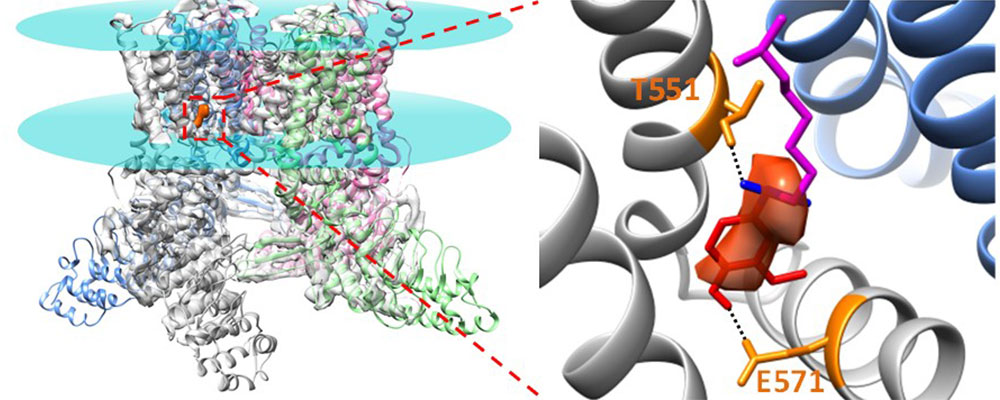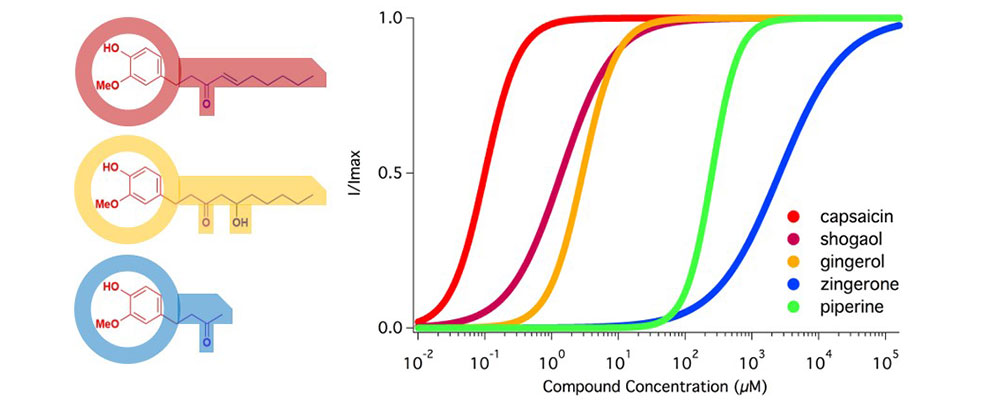Our Research
Ion channels are membrane proteins found in all cell types. Under precise regulation of cellular and environmental inputs, ion channels support rapid ion translation into or out of cell, which generates electrical signaling of the nervous system, triggers muscle contraction, initiates fertilization and immune response, etc. Ion channels are the target of many drugs currently on the market or under development. Mechanisms underlying the activation and inactivation of an ion channel, termed gating, thus hold the key to understand numerous physiological phenomena.
Our current research focuses on the capsaicin receptor TRPV1 ion channels and its homologs. Gating of these ion channels is “polymodal”, meaning that multiple physical and chemical stimuli can be simultaneously detected. Activation of TRPV1 by pungent compounds in chili peppers (capsaicin) and gingers (shogaol, gingerol, zingerone) produces the spicy sensation; its activation by heat supports temperature sensing and body thermo-regulation; its activation by extracellular H+ plays an important role in inflammation response. Activation of TRPV1 in nociceptive neurons by these and additional stimuli (e.g., toxins produced by venomous animals) initiates pain signaling. Multiple clinical trials are testing analgesic drug candidates that manipulate TRPV1 activity.
Investigating the polymodal activation mechanisms of TRPV1 and related channels calls for a multidisciplinary approach. Patch-clamp recordings at macroscopic and single-channel levels yield high temporal resolution information on its gating kinetics and equilibrium properties. Pharmacological analyses using native or novel synthesized compounds and peptide toxins hold the key to unlock the mystery of ligand-host interactions. Computational modeling based on available high-resolution cryo-EM structures guides ligand docking, precise structural perturbations by mutagenesis and chemical modification, as well as de novo design of peptide modulators. Spectroscopic imaging coupled with site-specific fluorescent unnatural amino acid incorporation allows real-time monitoring of conformational changes, whose functional output can be monitored simultaneously by patch-clamp recording. We combine these methods with additional biophysical and biochemical approaches and various cell and animal models to address specific needs for solving each scientific question.

